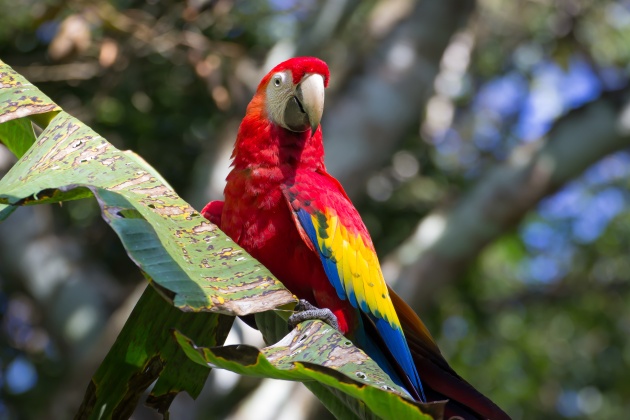
In an effort to save scarlet macaws (Ara macao) researchers at the Tambopata Macaw Project in southeastern Peru have studied and cared for them since 1989. In the process they discovered why macaw chick survival is so low. Scarlet macaws prefer to raise an only child.
Though the female lays two to four eggs, when the eggs hatch the parents shower all their food and attention on the first hatchling and neglect the others. The second chick has a 45% chance of survival but the rest starve.
This low reproductive rate is bad for a species threatened by forest fragmentation and the pet trade, so Tambopata has come up with an innovative way to save the abandoned chicks. They’ve developed a project to rescue the neglected chicks and relocate them to foster parents in wild nests with none or only one chick.
Shannyn Courtenay at the Macaw Project writes, “There is already great interest in this new work from macaw managers and conservation projects in Mexico, Guatemala, and Costa Rica where scarlet macaws are endangered.”
See a video about the project and their crowdfunding request at Increasing Survival of Macaw Chicks using Foster Macaw Parents in the Wild.
Over the holiday season the project reached its funding goal (yay!) but you can still contribute through January 7, 2018.
(photo by Alejandro Morales courtesy PBS NATURE)
I have enjoyed seeing Scarlet Macaws in the wild in Costa Rica and Honduras. I was happy to support this project. Birds need all the help they can get! Thank you for sharing this interesting research with us.